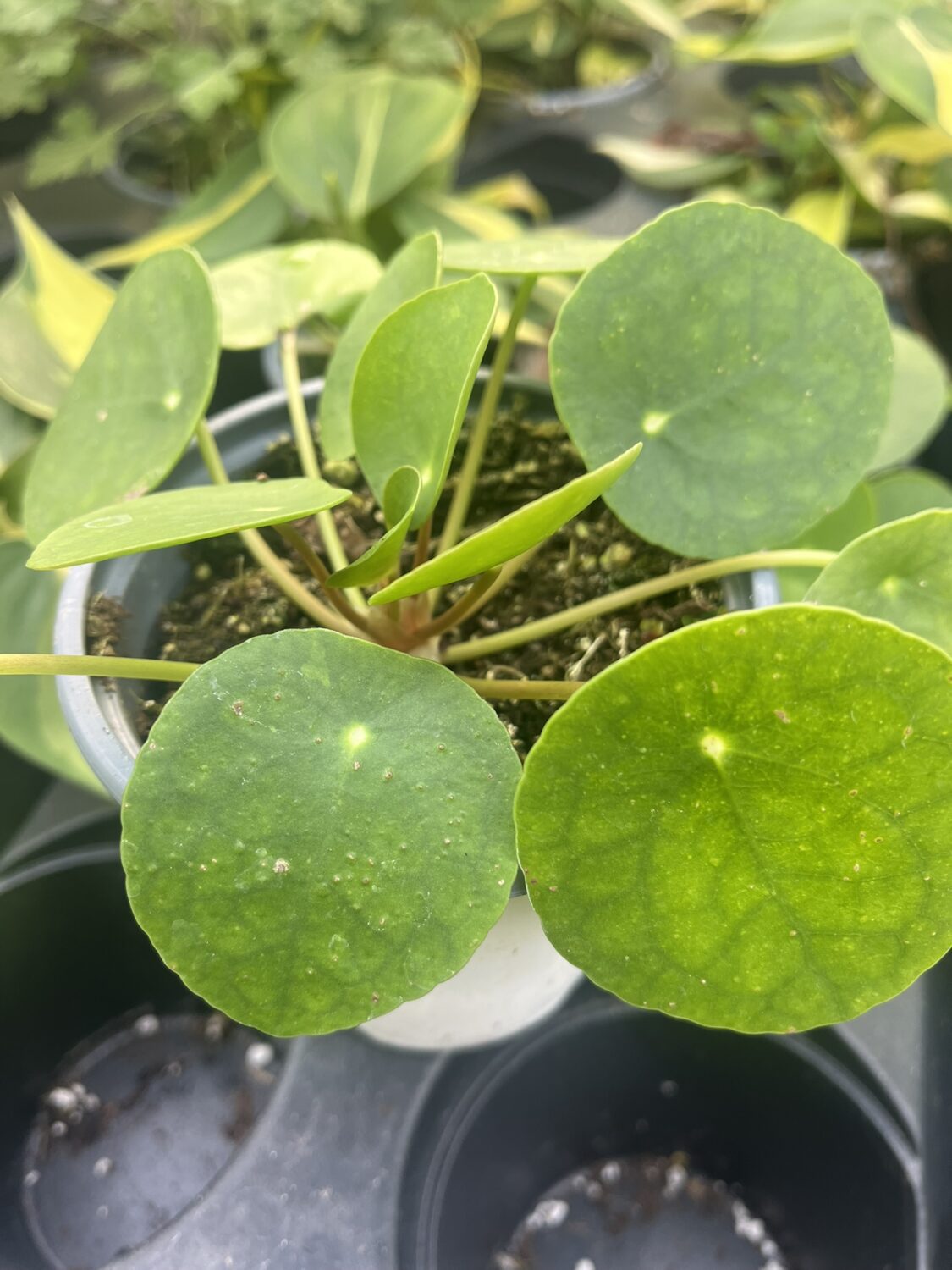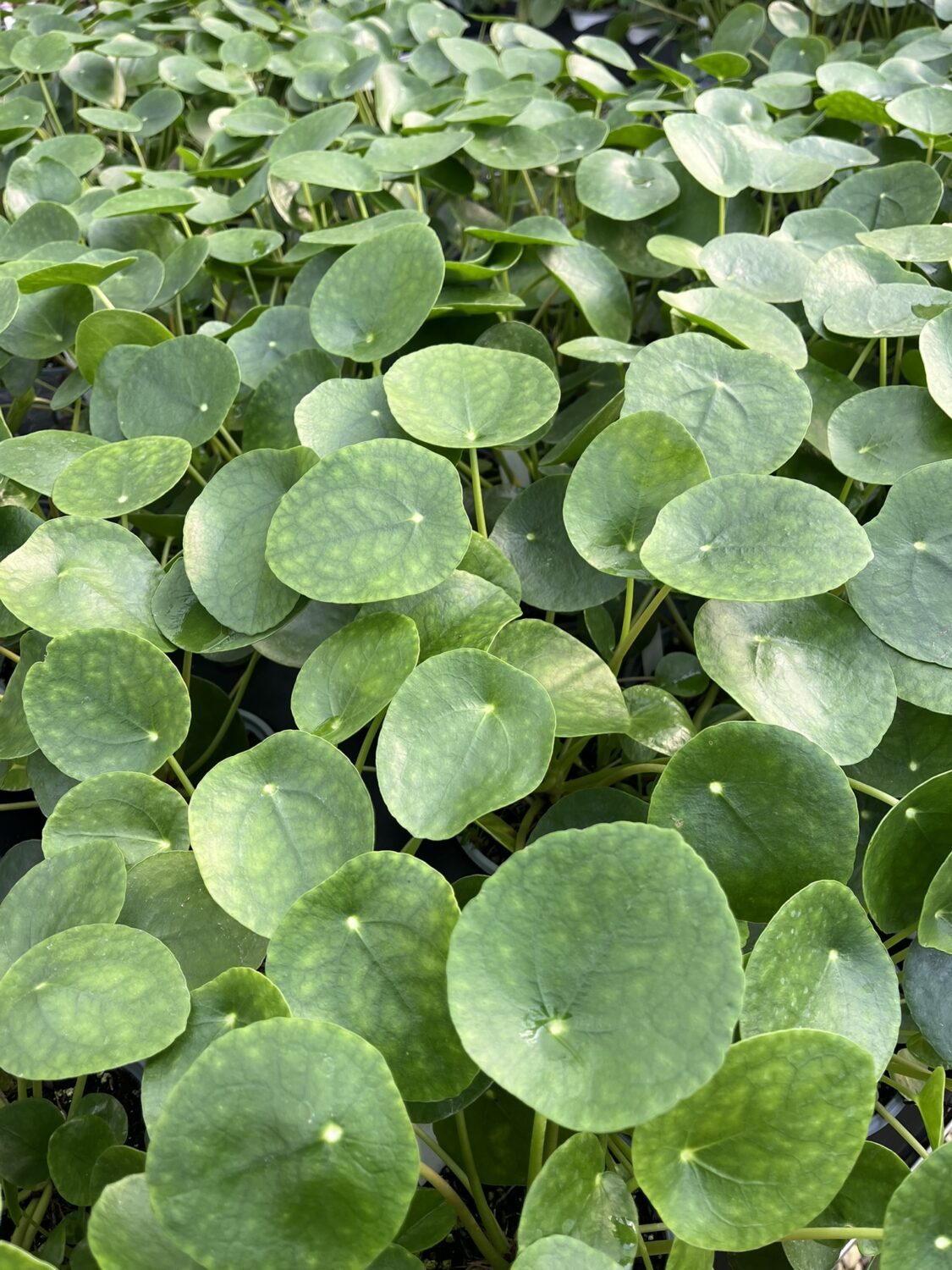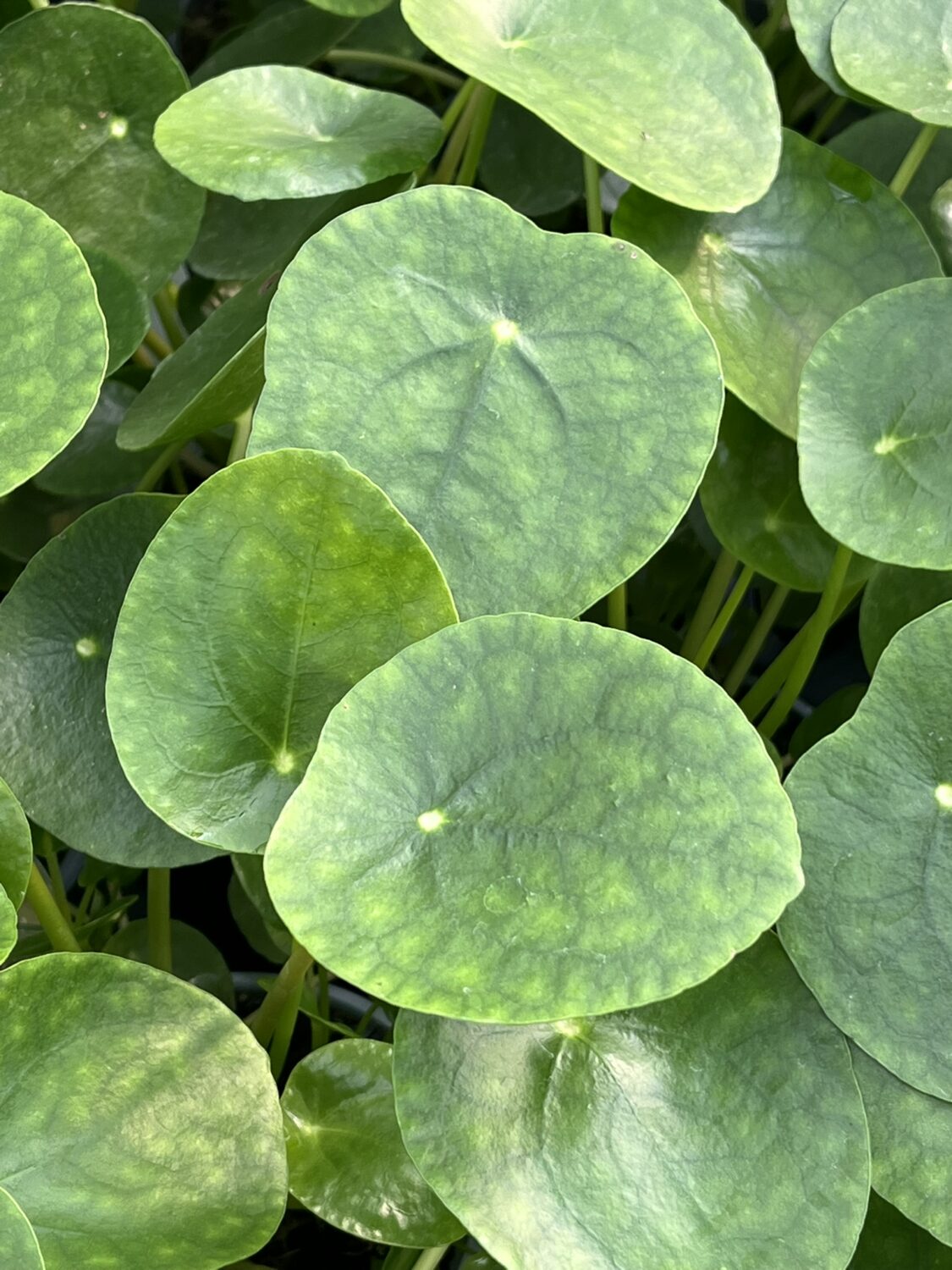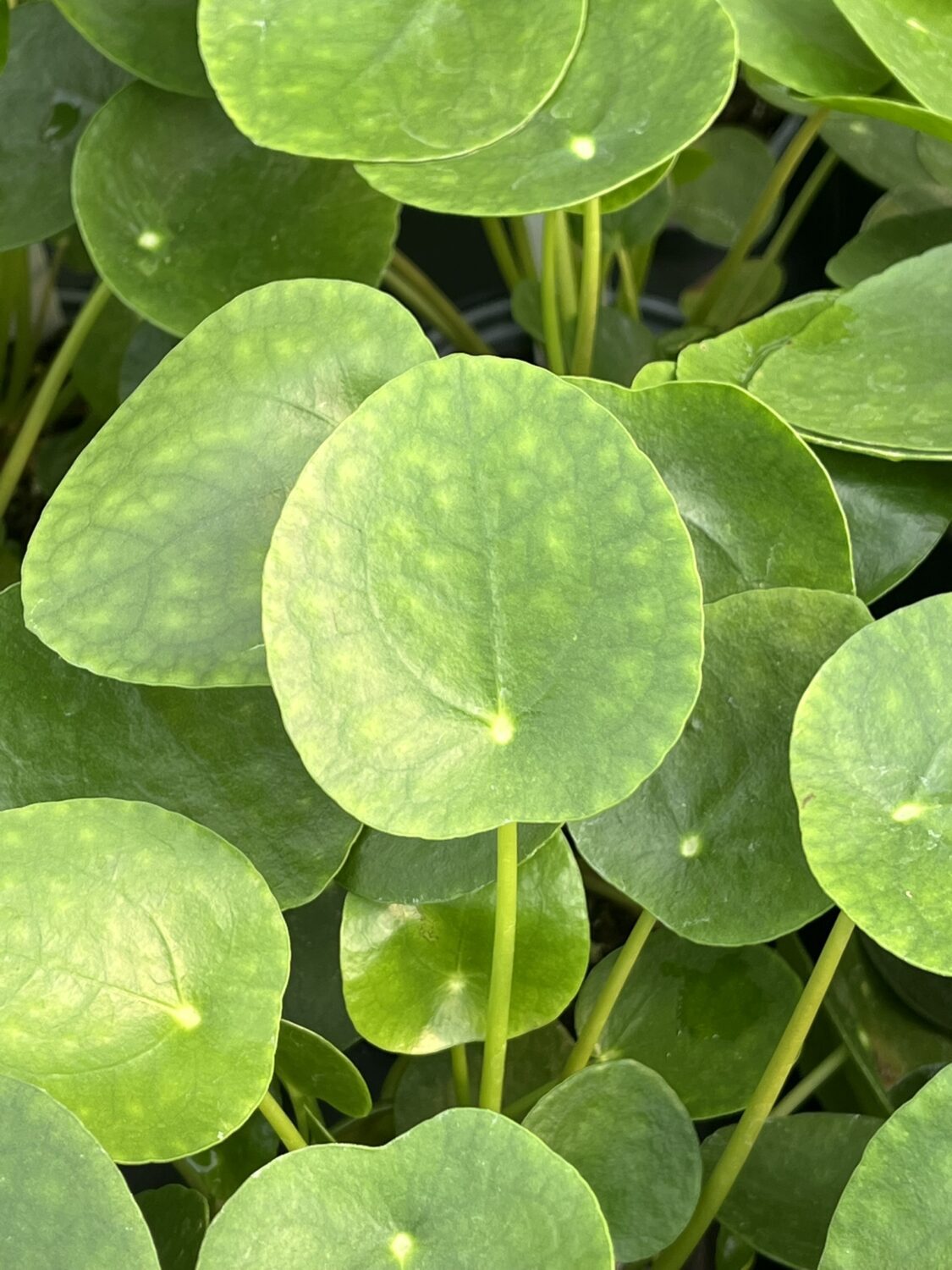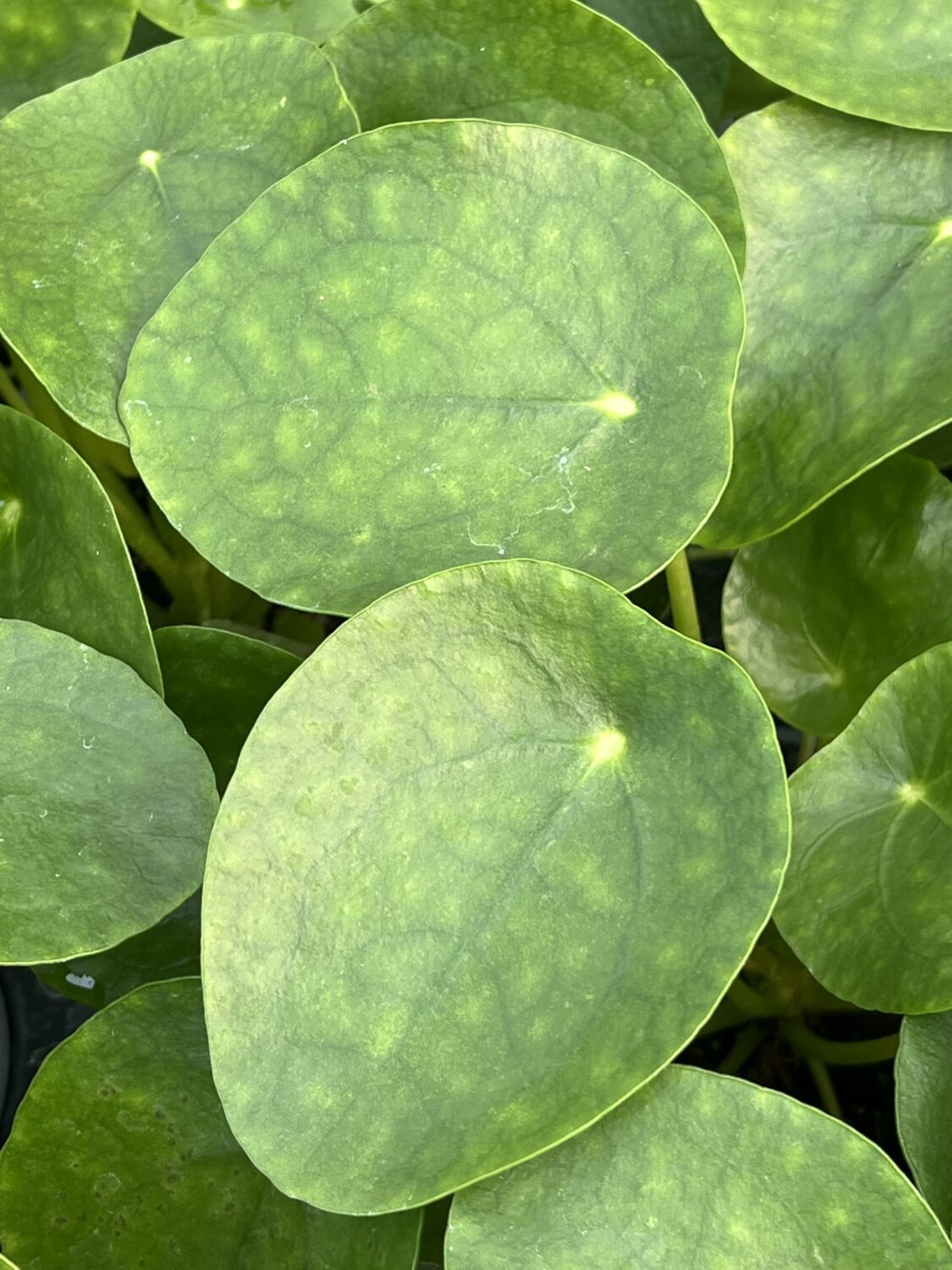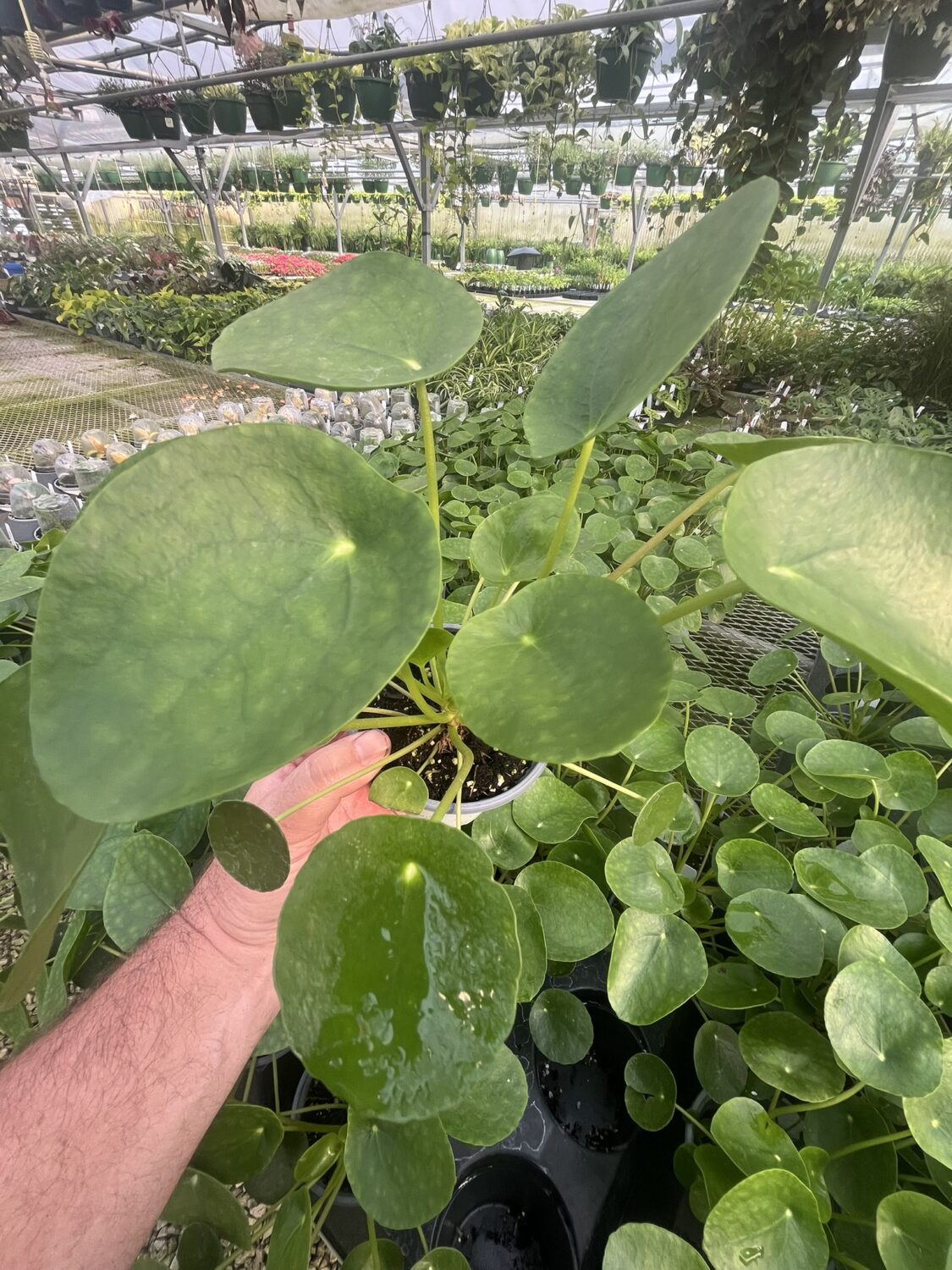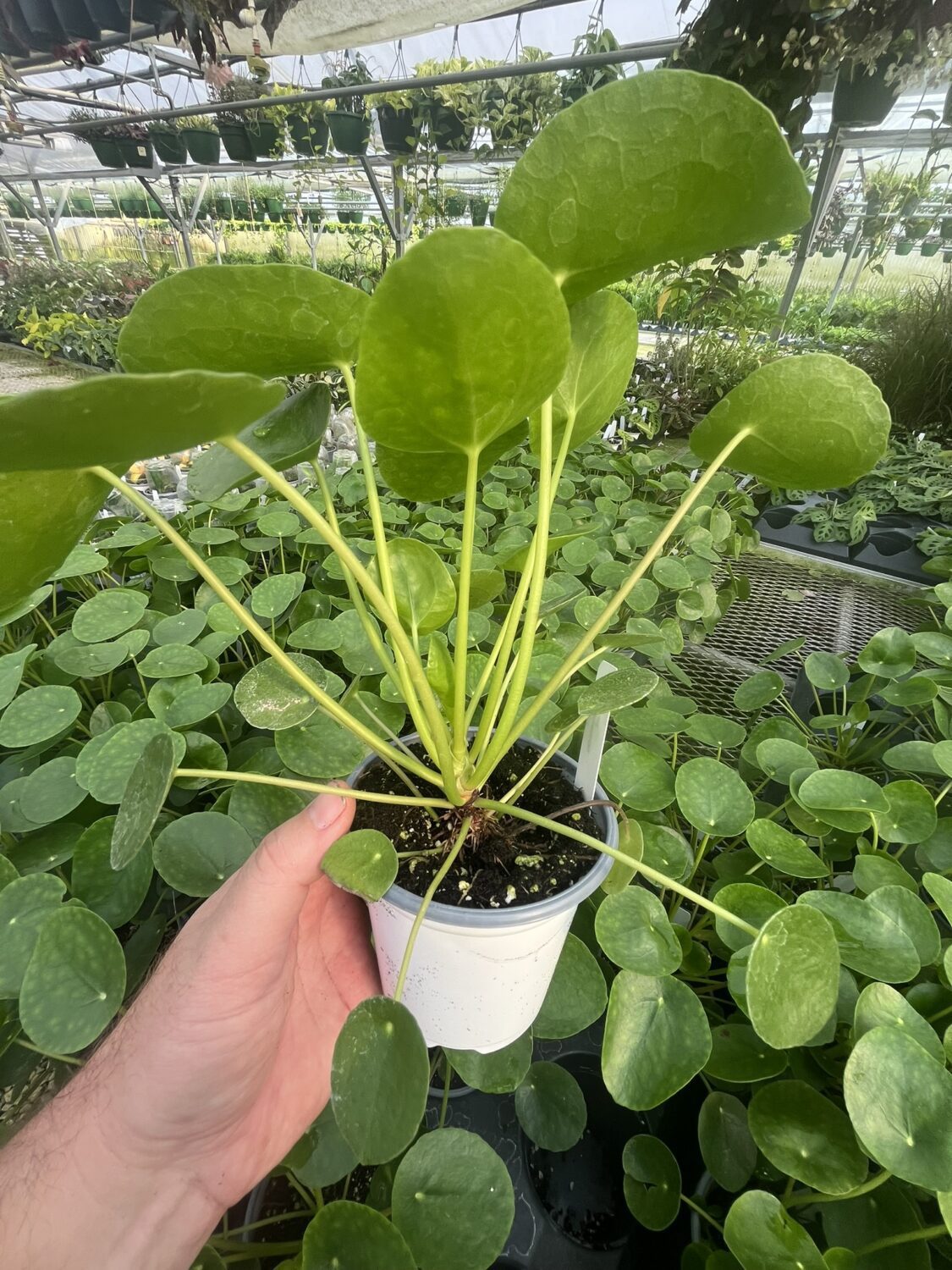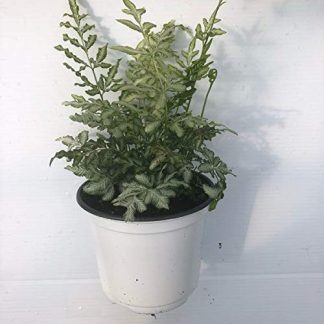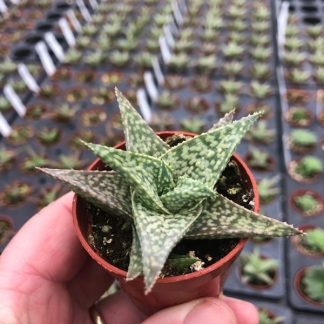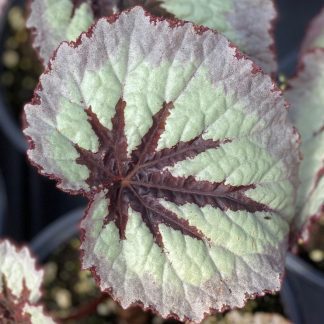Description
Pilea peperomioides: Chinese Money Plant Care Guide
Pilea peperomioides, widely known as the Chinese Money Plant, is a charming houseplant beloved for its round, coin-like leaves that grow on slender stems. Often called the Pancake Plant or UFO Plant, this species hails from China’s Yunnan province and has become a global favorite for its symbolic ties to prosperity and good fortune.
Its minimalist style and fresh green color make it a natural fit for modern or Scandinavian-inspired interiors. Small yet striking, it brightens desks, shelves, and windowsills. Even better? It’s easy to grow and simple to share through propagation, making it a perfect gift plant.
Why This Plant Stands Out
-
Symbol of Luck – Associated with abundance and positive energy.
-
Minimalist Aesthetic – Fits clean, modern décor styles.
-
Compact Size – Perfect for small spaces.
-
Easy to Propagate – Produces offsets (“pups”) you can share.
-
Low-Maintenance – Great for beginners and busy plant lovers.
How to Grow Pilea peperomioides
This guide covers planting, light, watering, soil, fertilizing, and more to help your plant thrive for years.
1. Planting and Propagation
The Chinese Money Plant is famous for its offsets (pups), which grow at the base of the mother plant. These can easily be separated and replanted.
Steps for Propagation:
-
Wait until pups are 2–3 inches tall with visible roots.
-
Gently remove the plant from its pot and locate the pup.
-
Use clean scissors or a knife to cut the pup away from the mother plant.
-
Pot the pup in fresh, well-draining soil.
-
Water lightly and place in bright, indirect light.
These pups grow quickly and can become mature plants in just a few months.
2. Light Requirements
Bright, indirect light is ideal. This prevents leaf scorch while encouraging lush growth.
-
Indoors: Place near an east- or north-facing window. A sheer curtain works well to diffuse stronger sunlight.
-
Outdoors: Keep in a shaded or filtered spot; avoid direct midday sun.
Rotate your plant weekly to promote even growth and prevent leaning.
3. Soil Requirements
A well-draining mix is essential to avoid root rot.
Recommended Soil Mix:
-
2 parts potting soil
-
1 part perlite or coarse sand
-
1 part peat moss or coconut coir
This combination balances moisture retention and aeration.
4. Watering
Pilea prefers moderate, consistent moisture. Overwatering is the most common issue.
Watering Tips:
-
Water when the top 1–2 inches of soil are dry.
-
Ensure the pot has drainage holes.
-
Reduce watering in winter when growth slows.
Signs of Problems:
-
Drooping leaves = underwatering.
-
Yellow leaves = overwatering.
5. Temperature and Humidity
Pilea thrives in typical household conditions but prefers slightly warm and humid environments.
-
Temperature: 60–75°F (15–24°C)
-
Humidity: Average indoor humidity is fine; higher levels encourage better growth.
Avoid drafts, heating vents, and sudden temperature swings.
6. Fertilization
Feed during the growing season (spring and summer) for lush foliage.
Fertilizer Guidelines:
-
Use a balanced, water-soluble fertilizer diluted to half strength.
-
Apply every 4–6 weeks.
-
Pause feeding in fall and winter when growth slows.
Flush soil occasionally to prevent salt buildup.
7. Pruning and Maintenance
Regular pruning helps keep your plant compact and bushy.
Pruning Tips:
-
Trim yellow, damaged, or leggy stems.
-
Pinch back tips to encourage bushier growth.
-
Wipe leaves with a damp cloth to remove dust and boost photosynthesis.
Remove pups as needed to prevent overcrowding.
8. Pest and Disease Management
Pilea is generally pest-resistant, but occasional infestations can occur.
Common Pests:
-
Spider mites
-
Mealybugs
-
Aphids
Control Measures:
-
Inspect regularly for webbing or sticky residue.
-
Wipe leaves with soapy water or use neem oil.
-
Maintain good airflow to reduce fungal problems.
Disease Tip:
Avoid overwatering to prevent root rot.
9. Repotting
Repot every 1–2 years or when the plant becomes root-bound.
Repotting Steps:
-
Choose a pot 1–2 inches larger in diameter.
-
Remove the plant and shake off old soil.
-
Trim unhealthy roots if needed.
-
Replant in fresh soil at the same depth.
This refreshes nutrients and supports continued growth.
10. Special Care Tips
-
Rotate weekly for even growth.
-
Keep out of direct sun to prevent leaf burn.
-
Share pups with friends – it’s a great gift plant.
-
Bring indoors during cold months; it’s not frost-hardy.
Benefits Beyond Beauty
The Chinese Money Plant isn’t just decorative – it’s meaningful. In feng shui, it represents wealth and positive energy. Its easy propagation also fosters community and sharing, making it more than just a plant – it’s a conversation starter.
Quick Troubleshooting
-
Leaves curling inward? Too much direct sun or underwatering.
-
Leaves turning yellow? Overwatering or poor drainage.
-
Plant leaning to one side? Rotate regularly for balance.
-
Stunted growth? Needs more light or fresh soil.
Why You’ll Love Growing It
Pilea peperomioides offers style, simplicity, and symbolism. It thrives in apartments, offices, and homes alike. With just basic care, you’ll enjoy its coin-like leaves and constant pups for years – and you might even share the good fortune by gifting new plants to others.
A Green Gem Worth Sharing
Caring for the Chinese Money Plant is both easy and rewarding. Its playful round leaves, quick propagation, and symbolic meaning make it a plant that grows with you. Over time, it becomes more than décor – it becomes part of your home’s story, passing luck and joy from one set of hands to another.

